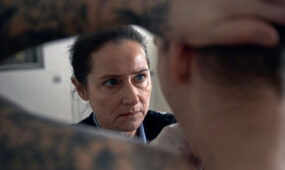Film review: Finding Dory
Film & TV
In the much-anticipated Finding Dory, it’s a year after Dory first found Nemo and Marlin in the coral reef, and now it’s her turn to get lost.

It’s not too big of a stretch, since the blue tang fish who helped find clownfish Nemo in Pixar’s 2003 beloved film Finding Nemo “suffers from memory loss”.
But here’s the kicker: she’s starting to get her memory back and thinks she can find her family. And that’s the trigger for another epic journey across the ocean and onto land where fish are held in tanks for the enjoyment of people like us.
Many of the characters audiences loved in Finding Nemo return for cameos in Dory, and even Marlin and Nemo play minor roles. This means that writer/director Andrew Stanton can make room for yet another round of winning characters.
The whale shark Destiny (voiced by Kaitlin Olson) and the beluga Bailey (voiced by Ty Burrell, aka Phil Dunphy from Modern Family) are two such characters, and the scenes where Destiny and Dory are communicating via eerie whale-song while Bailey is sounding off his echo location call so that everyone is safely “found” are hilarious.
While Dory (voiced once again by the joyfully crazed Ellen DeGeneres) is an entirely endearing protagonist and the ocean is a visual feast of colours for young and old, the film has some pretty serious undertones that are passed off as rather funny scenes.
Because Dory is mistakenly plucked from the water as an injured fish, she’s taken to an institute where Sigourney Weaver’s recorded voice repeats its mission: “rescue, rehabilitate, release”. But it’s not quite so philanthropic when we see the fish in a touch tank completely traumatised, repeating “hands! hands!” as chubby kiddie fingers are plunged underwater so that they can grab and squeeze these “rescued” fish over and over.

Get InReview in your inbox – free each Saturday. Local arts and culture – covered.
Thanks for signing up to the InReview newsletter.
The fact that Destiny is near-sighted makes a strange case for her being in an aquarium where she can bump into the walls every few seconds. Wouldn’t the ocean be a better option?
Even Dory’s school, once she finds them, are being shipped to an exhibit in Cincinnati, trading one place of captivity for another. This is most disconcerting for the animal rights lover inside us all and it’s a bit sad that the film doesn’t dwell on any of these issues, beyond humour, to teach children lessons on capture and exploitation.
But at least there’s redemption in Dory, who is “challenged” (her institutionalisation with the others, however, proving slightly problematic as well) because she ultimately overcomes her obstacles and proves to be a true Disney hero.
Support local arts journalism
Your support will help us continue the important work of InReview in publishing free professional journalism that celebrates, interrogates and amplifies arts and culture in South Australia.
Donate Here






Comments
Show comments Hide comments